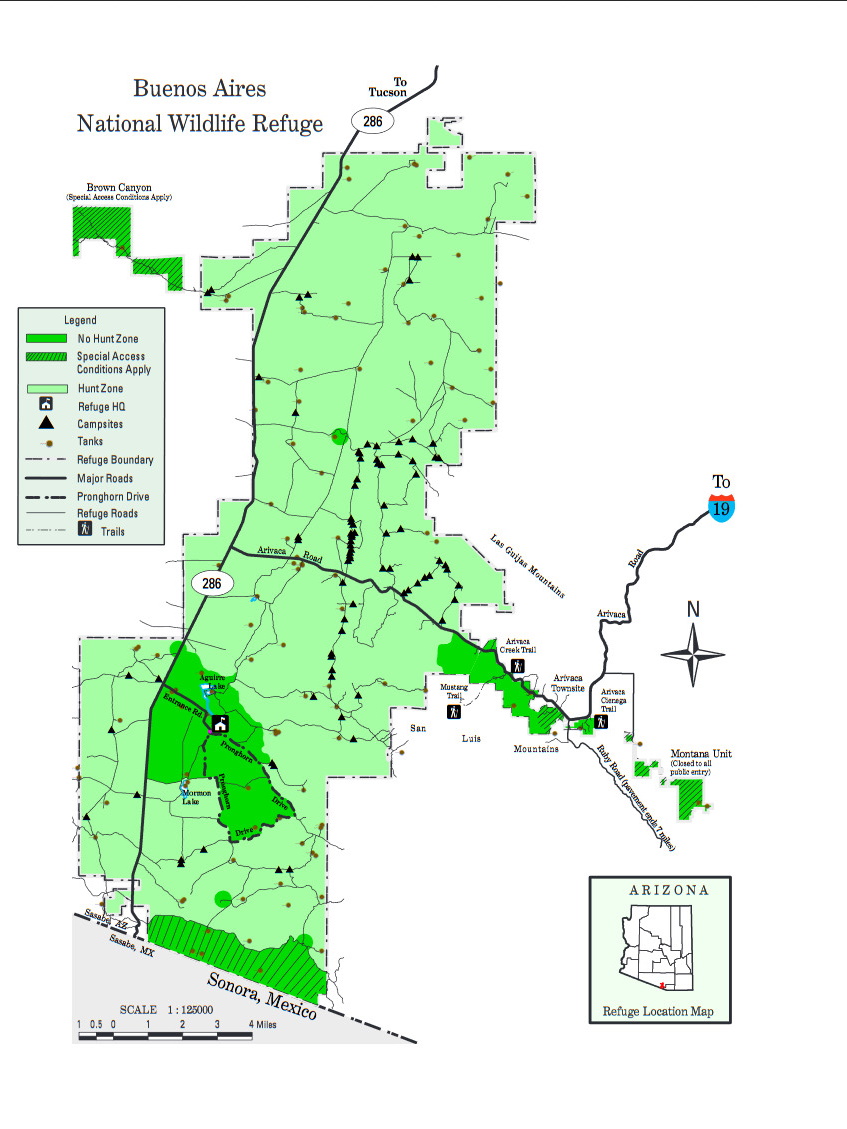Buenos Aires NWR--Arivaca Cienega
Buenos Aires NWR--Arivaca Cienega
Important Bird Area Sasabe, Arizona 85633
Arivaca Cienega and Creek Important Bird AreaBuenos Aires National Wildlife Refuge Official Website
Buenos Aires National Wildlife Refuge map
Buenos Aires National Wildlife Refuge Trails
Tips for Birding
Arivaca Cienega is one of ten location-specific hotspots within Buenos Aires National Wildlife Refuge. Use the greater Refuge hotspot when you have a checklist that includes multiple locations.
Birds of Interest
This hotspot is part of an IBA so designated by Audubon because it has historically supported significant breeding numbers of Yellow-billed Cuckoo (threatened), Gray Hawk, Swainson's Hawk, and Lucy's Warbler, as well as small but reliable numbers of nesting Costa's Hummingbird, Northern Beardless-Tyrannulet, Tropical and Thick-billed Kingbirds, Rufous-winged Sparrow, and Varied Bunting. Sora and Virginia Rail, uncommon species in Arizona, were reported by Audubon to nest within the cienega.
Additionally, the IBA supports many species in migration, such as Southwestern Willow Flycatcher (endangered), Gray Flycatcher, Virginia's Warbler, and MacGillivray's Warbler.
Winter also brings an influx of raptors, particularly Golden Eagle, Peregrine Falcon, Merlin, Prairie Falcon, and Crested Caracara.
A great diversity of sparrows are present most of the year, and especially in winter.
About this Location
This IBA is a rare desert cienega and connected creek system. These wet habitats are just a small part of the Buenos Aires National Wildlife Refuge, which encompasses 118,000 acres. Arivaca IBA is located thirty miles west from I-19, the main north-south interstate highway in southern Arizona, near the town of Arivaca. The cienega is supported by seven springs. Arivaca Creek in most years is a perennial creek for 2 miles of its 5-mile length to where it joins the Brawley Wash system.
About Buenos Aires National Wildlife Refuge
See all hotspots at Buenos Aires National Wildlife Refuge
Located in southern Arizona, Buenos Aires National Wildlife Refuge was established for the reintroduction of masked bobwhite quail and to restore the natural landscapes and native wildlife that depend upon it.
Spanning the 117,464-acre refuge are several distinct groups of plants and animals that are dependent on each other, also known as biotic communities. Visitors will enjoy the semi-desert grasslands that blend into the cottonwoods and willow that line river banks and wetlands within the refuge. Settled in amongst the grasslands and wetlands is a beautiful sycamore-shaded canyon of extraordinary diversity. Brown Canyon is home to 200-million-year-old volcanic rocks that support a distinct variety of plants and animals that have evolved within this amazing sky island ecosystem.
Established in 1985, the refuge was purchased under the authority of the Endangered Species Act. Open to the public, visitors can enjoy wildlife watching and photography, hunting, fishing, wildlife photography, and special wildlife-related events. It is one of more than 550 refuges that comprise the National Wildlife Refuge System, a national network of public lands and waters set aside for the benefit of wildlife and you!
Notable Trails
The Arivaca Cienega Trail is 1.25 miles, part boardwalk and part packed-dirt surface.
Features
Restrooms on site
Wheelchair accessible trail
Entrance fee
Roadside viewing
Content from Arivaca Cienega and Creek Important Bird Area, Buenos Aires National Wildlife Refuge Official Website, Buenos Aires National Wildlife Refuge brochure, and John Montgomery
Last updated January 4, 2024
